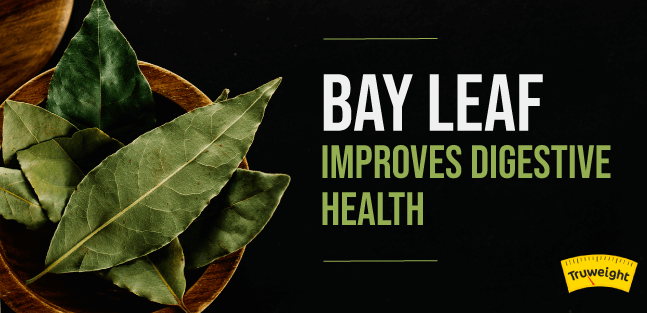Health, Healthy Snacks, Recipes
Health benefits of Bay Leaf and its Addition in Recipes
Bay leaf (Laurus nobilis) or commonly known as Tej Patta, is an evergreen, fragrant leaf from Lauraceae family.
It is an indigenous herb of Middle Asia and has propagated to different parts with Mediterranean-like climate. A meagre spice but the health benefits of bay leaf are significant.
Table of contents
- Uses of bay leaf
- Nutrient and Phytonutrient Profile
- Health benefits
- Bay leaf: Integral part of food culture
From Apollo’s bay leaf, Indian bay to Dhafni in greek, it is known by different names and holds a prominent, legendary place since ages in different cultures and various mythologies attributed to its peculiar flavour and therapeutic benefits.
It also holds a very specific place when comes to the variety of spices in Indian kitchen that affects the cooking style as well the body’s metabolism.
Uses of Bay leaf
- Bay leaf is commonly used in culinary practices as a flavouring agent to impart its peculiar aroma in soups, sauces, and gravies.
- The bay leaf is also used as an antiseptic for the healing of wounds and injuries.
- In some regions and cultures, burning of bay leaf is also considered to be beneficial as it helps in easing stress, lethargy, and drowsiness.
- The smoke being released out contains elemicin, pinene, and cineol that produces a relaxing and revitalizing effect.
- It is now also used in aromatherapy for treating respiratory disorders and also for hair and skin disorders.
Nutrient and Phytonutrient Profile of Bay leaf
The macro and micronutrient content of the bay leaf has been determined by standard organizations like USDA but its the electrolyte and the essential phytonutrient content that makes it a valuable asset on the kitchen shelf. Table 1 shows the macronutrient profile of bay leaf.
Table 1: Proximate Composition of Bay leaf
| Meals | Foods To Eat |
|---|---|
| Early morning | 1-2 glasses of lukewarm water + lime juice + 1 tsp Methi seeds/powder |
| Breakfast | 1 bowl of sprouts or 2 no Besan Chilla or 2-3 no Egg Whites Bhurjee |
| Mid Morning | 1 glass of vegetable juice |
| Lunch | 2 jowar phulkas + 1 bowl of vegetable + 1 bowl of thin dal or curd + 1 bowl of salad |
| Evening Snack | Green tea + Roasted chana or fruit |
| Dinner | 2 jowar phulkas + 1 bowl of vegetable + 1 bowl of thin dal / Roasted Chicken / Grilled Fish + 1 bowl salad |
Source: USDA
Bay leaf is a good source of minerals like manganese, potassium, calcium, magnesium, and vitamins like Vitamin C, A, D and Folic acid.
These micronutrients help in regulating the normal body functioning like nutrient metabolism, blood clotting,
muscle contraction, regulation of blood pressure and body’s homeostasis while working as a cofactor for many important enzymes. Table 2 presents its micronutrient profile.
Phytonutrient Profile:
The phytonutrient content in the bay leaf is mainly characterized in form of essential oils which are volatile in nature.
It comprises compounds like major cineol, eucalyptol, terpenes, pinene, and limonene.
These compounds impart its therapeutic properties like antiseptic, anticancer and antioxidant as well.
Table 2: Micronutrient Profile of Bay Leaf
| Meals | Foods To Eat |
|---|---|
| Early morning | 1-2 glasses of lukewarm water + lime juice + 1 tsp Methi seeds/powder |
| Breakfast | 1 bowl of sprouts or 2 no Besan Chilla or 2-3 no Egg Whites Bhurjee |
| Mid Morning | 1 glass of vegetable juice |
| Lunch | 2 jowar phulkas + 1 bowl of vegetable + 1 bowl of thin dal or curd + 1 bowl of salad |
| Evening Snack | Green tea + Roasted chana or fruit |
| Dinner | 2 jowar phulkas + 1 bowl of vegetable + 1 bowl of thin dal / Roasted Chicken / Grilled Fish + 1 bowl salad |
Source: USDA
Health benefits of Bay leaf
The bay leaf has several health benefits along with culinary significance. This is majorly attributed to the phytonutrient composition.
It was widely used by Greeks and Romans, who considered bay leaf as a symbol of protection and victory- for the god of healing.
Improves digestion-
As per the Ayurveda, bay leaf aid in the proper digestion process. It acts as a natural diuretic, and hence, helps in the excretion of toxins by stimulating urination.
Also, the bay leaf contains an enzyme, that helps in the efficient breakdown of food especially the protein. Therefore, it is a good relieving agent for patients suffering from IBS, Crohn’s disease. Bay leaf also acts as an appetite stimulator and therefore, aid in improving food intake after an illness.
Management of diabetes-
Bay leaf helps in better regulation of blood sugar level as it improves the insulin receptor functioning of cells. It not only cures but prevents the occurrence of diabetes if taken daily for 30 days.
Anti Inflammatory properties-
A phytonutrient- Parthenolide, present in bay leaf, is released instantly with its consumption which helps in reducing the severity of inflammation.
Therefore, consequently, helping in reducing the fierceness of inflammation-related disorders like arthritis, rheumatoid and inflammation due to wounds as well.
It has been seen that applying bay leaf oil or drinking its concoction with tea, helps in relieving from pain, headache and even migraine.
Cardiovascular benefits-
Bay leaf is very distinct in its heart-protecting functions. A compound Rutin, present in bay leaf, helps in strengthening of arterial walls and prevents its rupturing.
The mineral composition of bay leaf, comprising of manganese, magnesium, and calcium, ensures smooth contraction of cardiac muscles and consequently, inefficient pumping of blood throughout the body.
Another compound, caffeic acid, present in bay leaf, is responsible for regulating the blood cholesterol level. Caffeic acid lowers the LDL or bad cholesterol level in blood and hence, preventing plaque formation and ultimately, chances of strokes.
Treating respiratory issues-
The essential oils present in the bay leaf can alleviate the breathing stress specifically if its due to some temporary illnesses like cold and cough.
Inhalation of vapours from a poultice made from bay leaves, acts as a diluting agent for accumulated phlegm, inhibiting the blockage and bacterial attack.
Also, due to antioxidants, the essential oil extracted from bay leaf, act as an antiseptic. Therefore, preventing the bacterial attack, contamination and respiratory infections.
Anticancer properties-
The distinct combination of antioxidants and organic compounds like catechins, quercetin and caffeic acid, is resistant to cell proliferation.
It helps in the destruction and removal of free radicals which can introduce mutation of healthy cells into cancerous cells. The compound Parthenolide has been found to specifically restrict the proliferation of cervical cancer cells.
Treating skin and hair related problems-
The compounds in the bay leaf are the potential source of eradicating dryness and scalp dandruff. The compounds get extracted and absorbed into the layers of hair follicles, imparting moisture.
Also, by treating the skin with the steam of water boiled with bay leaves, helps in removal of toxins and rejuvenating the skin.
Reduce Stress and Anxiety-
The compound in bay leaf- Linalool, helps in lowering the level of stress hormone if treated with during Aromatherapy session.
Bay leaf: Integral part of our food culture
Though like every other spice and herb, the use of bay leaf is also optional that depends on our need and desire to add flavour. But its addition to any recipe not only enhances the aromatic aspect but also, amplify the nutrient and health benefits to another level.
It is one of the versatile spice that is been added to a variety of dishes and used in diverse regions and cultures. This spice has peculiar, pungent flavour that remains intact when fresh and even, dried.
- The bay leaf can be used in fresh or dried form- Though the incorporation of fresh bay leaf imparts more peculiar and sharp flavour, dry bay leaf imparts comparatively mild and less pungent flavour.
- The bay leaf can be dried and kept in airtight containers for usage up to one year. This drying technique increases the shelf life and also ensures its easy availability.
- The bay leaf can be used as the whole, crushed or rounded form. Generally, in Indian and Middle Eastern regions, bay leaf is used as one of the ingredients that made up ‘bouquet garni’- a bunch of herbs tied together and placed in the stew, soup or any gravies.
- It is also, popularly, used as a marinade for meat and seafood dishes.
- It is used as an ingredient employed for pickling. In Russia and Ukraine nations, bay leaf is a popular ingredient for the preparation of fermented product- Sauerkraut.
- Many European and American recipes employ the use of the bay leaf as a flavouring agent- like soups, stews, kind of kinds of pasta and Risotto.

In India, bay leaf is an integral part of every kitchen. It is used in the number of recipes ranging from Pulaos, biryanis to vegetable and meat- based curries.
Even, sweet dishes like Kheer, payasam and custard dishes, are flavoured by using a bay leaf as an integral part of bouquet garni.
With the time like this, when people are totally occupied balancing various aspects of life, the first thing that gets compromised is health, specifically, the food intake and eating pattern.
Including such small yet significant commodities not only gives pleasure to your senses but also, bestow a blessing on your health and life ahead.

Hey! Love your site; much great information for free!
Hi Sivert! We are glad that you liked our site and the information provided on the article ” Health benefits of bay leaf and it’s addition”, Keep following our blog to know more health information.
Great article! I include bay leaf in a couple of my Indian recipes, but plan on doing so more now!
Hi Claire! We appreciate you for taking your valuable time to share us the feedback on our article “health benefits of bay leaf and it’s addition in recipes”. Keep following our blog to know more health information.